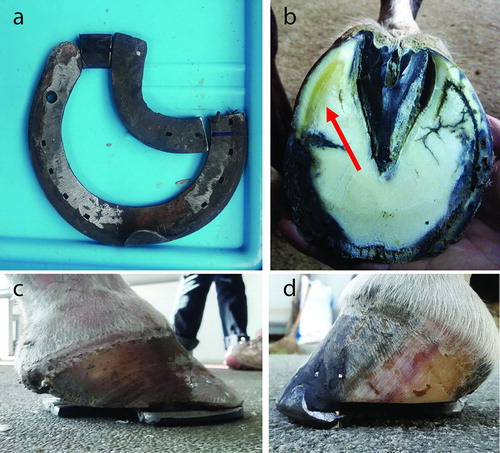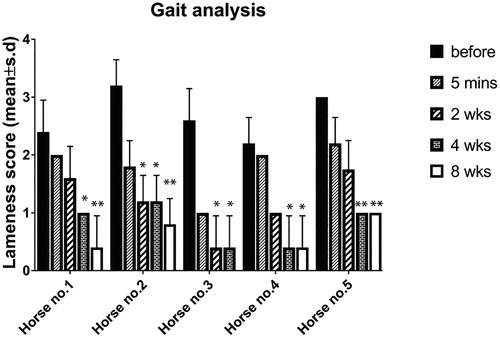Figures & data
Figure 1. The creation of z bar shoe to fit the affected limbs of the horses. The z bar shoe is created by cutting unilateral branch of metal shoe and connecting the cut branch with the intact branch by another piece of metal to produce a non-weight-bearing area (a). The affected palmar region is rasped more than another part of foot to create the non-weight-bearing area and facilitate hoof wall growth (red arrow) (b). Non-weight-bearing positions on medial side of left and right forelimbs fitted with z bar shoes respectively (c and d).

Figure 2. The application of z bar shoes on the affected limbs of the horses. The horse no. 1 (a) and no. 3 (b) are shod with medial palmar non-weight bearing z bar shoe on the right forelimb. The horse no. 2 (c) are shod on the left forelimb with lateral palmar non-weight bearing Z bar shoe, while the horse no. 4 (d) and no. 5 (e) are shod on the left forelimb with medial palmar non-weight-bearing z bar shoes. LF; left forelimb, RF; right forelimb.


